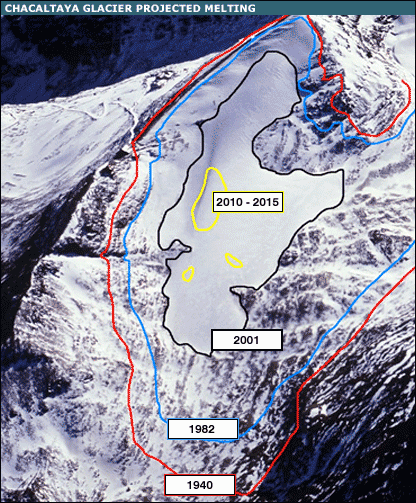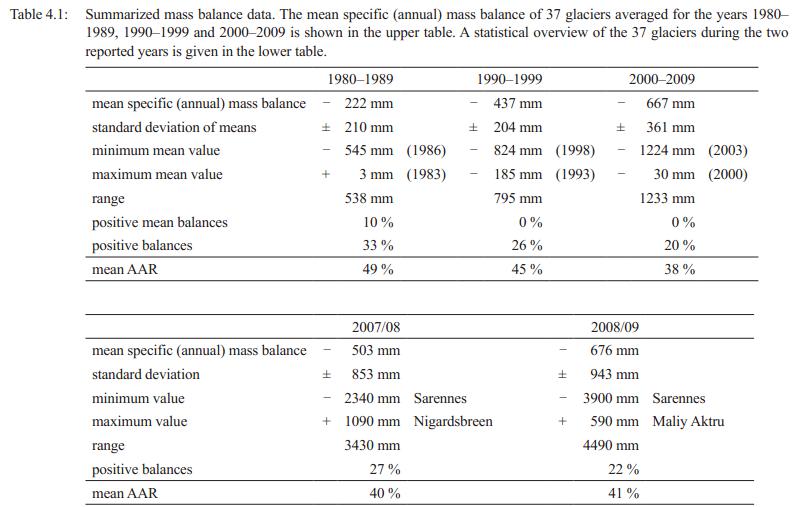Latest summary confirms death of Chacaltaya glacier, and acceleration of global glacier shrinkage in the 2000s
Posted on 17 December 2011 by MarkR

Figure 1 - Map of Chacaltaya glacier, past changes and future expected changes from a 2007 BBC article. The glacier was expected to last until around 2015, but the last of it melted in 2009.
In 2009 some news outlets reported that Bolivia’s 18,000 year old Chacaltaya glacier ‘bit the dust’ 6 years ahead of projections.That finding has now been confirmed by the World Glacier Monitoring Service (WGMS) in its recently released Glacier Mass Balance Bulletin 08/09.
In some places warming leads to more snowfall because warmer air holds more moisture, but as a rule glaciers should shrink as the climate warms. Whilst Chacaltaya might make a spectacular poster child for global warming, one glacier is not a strong piece of evidence for or against global warming. We must look at global patterns, and this is what the WGMS does.
Because of the volume of data and the time needed to analyze it, the just released bulletin covers the 2008-2009 time period.
The Glacier Mass Balance Bulletin reports on the state of glaciers regularly visited and measured by scientists. Satellites and aircraft measure thousands of glaciers worldwide but to make sure we can trust these measurements, and to get more detail, there’s no substitute for boots on the ground.
Measurements of 136 glaciers from Antarctica to Canada and from Bolivia to Japan feature in this edition, although N America and Europe are best represented. Almost 90% are shrinking.

A group of 37 reference glaciers which have been measured continuously for decades were used to provide some statistics. On average, glaciers lost around 60 cm (~ 2 feet) of thickness in each of 2008 and 2009, close to the average for this decade but faster than the '90s, and much faster than the '80s.

The table shows these statistics; where the 'mass balance' is reported in 'mm of water equivalent' change per year. This is the depth of water that would be left if the ice melted and wasn't allowed to drain away: 222 mm of water equivalent is about 24 cm or 9 inches of ice.
The world's glaciers are, on average, continuing to lose weight, and are doing it more quickly than previous decades. They're certainly convinced that warming is happening.
Note: this post has been used to update the rebuttals to Glaciers are growing































 Arguments
Arguments






























Note the use of the word future in your IPCC quote. Note also the words globally averaged mean water vapour. Clearly glaciers are not a global mean occurrence.